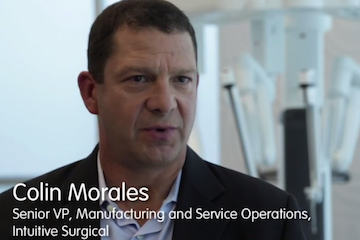Getting Started
While the following steps can be used to help innovators and companies develop an R&D strategy and begin thinking about issues related to the development of an R&D plan, remember that all R&D activities must remain closely linked to prototyping and clinical efforts and should not be developed in isolation.
Determine Strategic R&D Milestones
What to Cover
Identify critical R&D milestones necessary to develop a commercial-ready product and mitigate mission-critical risks on the path to market. These risks often relate to essential regulatory and clinical requirements that can be addressed through increasingly robust tests—first on the bench, then in cadavers and animals, and finally in humans. Consider different sets of critical milestones, alternative ways of sequencing them, and the strategic implications of changing the sequence and order of the milestones. And remember to include user-related milestones, such as the output of usability and user experience testing, which can be important for mitigating commercial and adoption risks later in the biodesign innovation process (especially for software-based solutions and mobile health (mHealth) applications).
Where to Look
Refer to 6.1 Operating Plan & Financial Model for more information about setting milestones. Network with other experienced innovators and professional advisors for assistance in defining milestones and estimating a reasonable time frame for achieving them.
Identify and Prioritize Key Technical Challenges
What to Cover
Define the significant technical, clinical, and manufacturing design challenges that must be solved to achieve each milestone. Once identified, these technical challenges should be prioritized based on the level of uncertainty and risk they present to the project. Seek to resolve those challenges with the greatest risk as early in the engineering process as possible, working within whatever constraints may exist within the company.
Where to Look
- Refer to 4.5 Concept Exploration & Testing for ideas and information relevant to identifying engineering and potential manufacturing challenges and/or consult references such as those listed under step 3 below.
- Refer to 5.3 Clinical Strategy for help identifying clinical and testing challenges.
Develop an Initial R&D Plan
What to Cover
At a high level, assess the R&D and testing activities, staff, other resources, and timeline needed to support the company’s strategic R&D milestones. Understand the strategic implications associated with these tactical decisions. This information can be used to iterate and refine the R&D strategy, particularly the R&D milestones. They should be outlined in increasing detail as the R&D process progresses to support the creation of the detailed R&D plan, as well as the development of an integrated operating plan and financial model.
Where to Look
In addition to referring to 6.1 Operating Plan & Financial Model, it may be helpful to review books on R&D (suggestions below), especially when considering requirements related to engineering personnel and resources. For milestones related to manufacturing, many interesting videos are available on YouTube that show how different production processes work, which may provide innovators with insights.
- Jonathan Anderson, John McRee, Robb Wilson, Effective UI: The Art of Building Great User Experience in Software (O’Reilly Media, 2010) – A good introduction to project management for software design.
- Darren Ashby, Electrical Engineering 101, Third Edition (Newnes, 2011).
- Anthony Atala, Robert Lanza, James A. Thomson, and Robert Nerem, Principles of Regenerative Medicine, Second Edition (Elsevier, 2010).
- James Bralla, Design for Manufacturability Handbook (McGraw-Hill Handbooks, 1998).
- J. Brandrup, E.H. Immergut, and E.A. Grulke, The Polymer Handbook, Fourth Edition (Wiley-Interscience, 2003).
- Richard G. Budynas and J. Keith Nisbett, Shigley’s Mechanical Engineering Design (McGraw Hill, 2010).
- J.R. Davis, Handbook of Materials for Medical Devices (ASM International, 2003).
- Paul Horowitz and Winfield Hill, The Art of Electronics, Second Edition (Cambridge University Press, 1989) – An authoritative text and reference on electronic circuit design.
- Paul H. King and Richard C. Fries, Design of Biomedical Devices and Systems (Marcel Dekker, Inc.: New York, 2003).
- Theodore R. Kucklick, The Medical Device R&D Handbook, Second Edition (CRC Press, 2012).
- Robert Lanza, Robert Langer, and Joseph Vacanti, Principles of Tissue Engineering, Fourth Edition (Elsevier, 2014).
- Jonathan Rasmussion, The Agile Samurai: How Agile Masters Deliver Great Software (Pragmatic Bookshelf, 2010) – An easy-to-read introduction to various aspects of agile software development.
- Buddy D. Ratner, Allan S. Hoffman, Frederick J. Schoen, and Jack Lemons, Biomaterials Science: An Introduction to Materials in Medicine, Third Edition (Elsevier, 2013).
- Bill Scott, Theresa Neil, Designing Web Interfaces: Principles and Patterns for Rich Interactions (O’Reilly Media, 2009) – Important insights on developing consistent, effective user interfaces for the web.
- L.H. Sperling, Introduction to Physical Polymer Science, Fourth Edition (Wiley-Interscience, 2006).
- Rob Thompson, Manufacturing Processes for Design Professionals (Thames & Hudson, 2007).
- Karl Ulrich and Steven E. Eppinger, Product Design and Development (McGraw-Hill/Irwin, 2003), chapter 13.
- Gerard Voland, Engineering by Design (Pearson Prentice Hall: Upper Saddle River, 2004).
- Steven C. Wheelwright and Kim B. Clark, Managing New Product and Process Development (Free Press) 1992 – See chapters 6, 8, and 9.
- Warren C. Young and Richard G. Budynas, Roark’s Formulas for Stress and Strain (McGraw Hill Professional, 2001).



